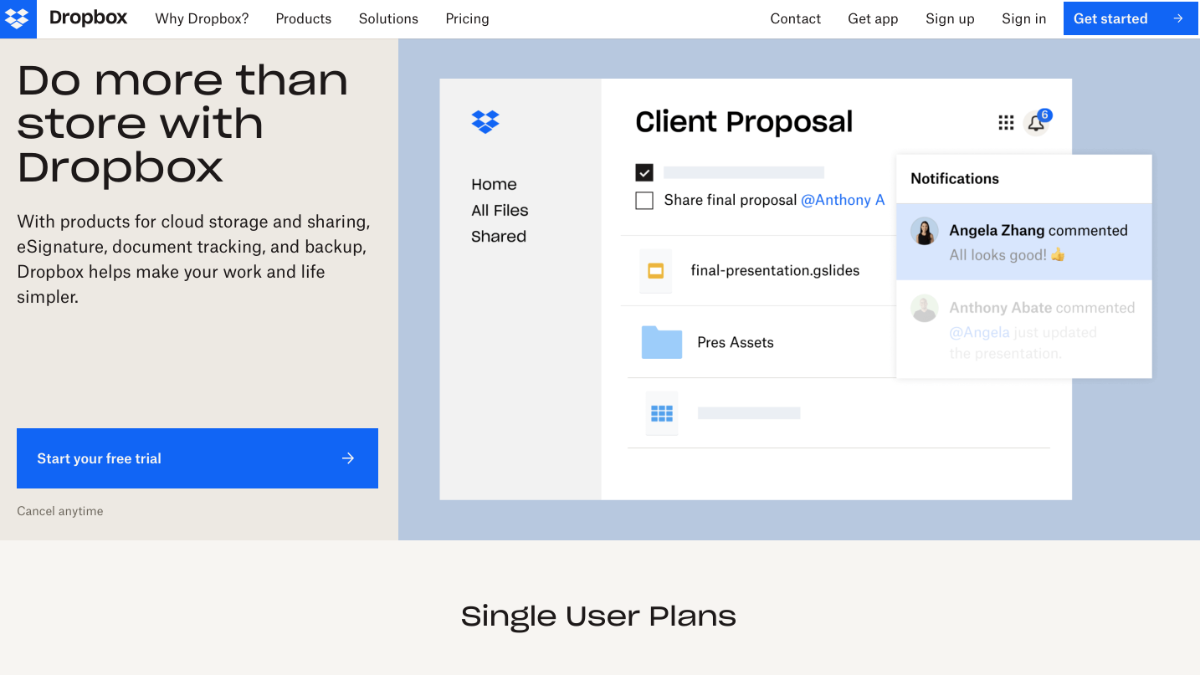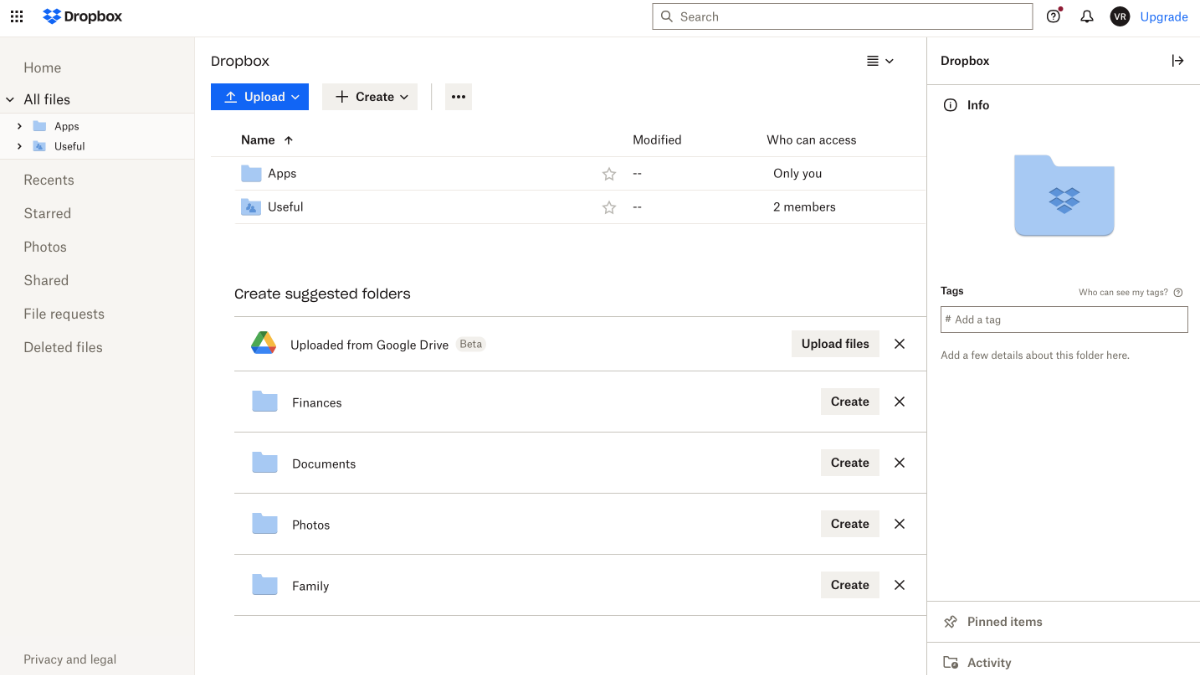In this material we will tell you about the history of the emergence and about the present of Dropbox brand fom USA.
What is Dropbox
Dropbox is a cloud storage service from Dropbox Inc. The service allows you to store your files in a safe place, and if necessary, share them.
The operation of the platform is based on data synchronization with devices on which the client is installed. The folder created on the PC is automatically synchronized with the service and all its contents immediately appear “in the cloud”. Thanks to this, you can access it from any device, for this you just need to log into your account on the Dropbox service. This can be done in different ways: through the service website or through a mobile application.
Users can create free accounts in the cloud, but with a limited amount of 2 GB. Free storage can be increased up to 16 GB, for this you need to invite several users who must register on the platform. If this number of gigabytes is not enough, then the volume can be increased by switching to a paid tariff.
The head of the company, he is also its creator - Drew Houston. The main office is located in San Francisco.

History of Dropbox
The idea of creating the Dropbox service came to mind in 2007, a student Drew Houston, who went on a weekend trip to New York by bus, took a laptop with him so that he would not be bored on the road, but forgot at home a flash drive that stored everything he needed. Similarly, forgetting essential items can be a hassle when relying on public transport, making a bus rental service a convenient alternative for group trips. Then Drew wondered if it was possible to have remote access to files, but at the same time do without physical media.
In order not to waste time and not get bored on the road, Drew Houston began writing an application that will help you get to the necessary files via the Internet. So the idea came up to create an application in the form of a cloud storage of files on the Internet.
The startup had the following idea: the user keeps all his files in one place and he does not have to use physical media: flash drives, disks, etc., and to get to his files he just needs to log into his account in the cloud service. At the same time, it does not matter from which device he will do this, the main thing is to remember the username and password.


Half a year later, Drew Houston flew to San Francisco to present his idea at the Y-combinator business incubator. There he was put forward a condition: to find a co-founder. Y-combinator felt that Drew alone would not last long, they needed a like-minded person, with whom it would be easier to endure all the hardships of startup development together. If he finds it, then Y-combinator will support his project. As a result, Drew Houston found a like-minded person, and Y-combinator gave them $15,000, which they spent on rented housing and the purchase of a new, more productive laptop.
Then began the search for investments. Investor walks were unsuccessful, the answer was the same - the problem is not so serious, and the market is full of various developments.
Drew understood that the prototype could not show all the possibilities of the service and decided to release a demo that did not load the viewer with technical information, but, on the contrary, conveyed information in a more comic, understandable form for an advanced audience. The creators of the service in a three-minute video talked about how it works, about file synchronization, and users on the other side of the monitor followed every action that Drew performed in his video.
The presentation shot. Within a few days, more than 100,000 people came to the site, and the number of orders for the beta version increased from 5,000 to 75,000. More than 10,000 users watched the presentation in a day. The company began to rapidly grow in popularity.

In 2009, Steve Jobs saw the potential of the service and offered Drew to buy the Dropbox company for $100 million, but he refused. Jobs created his own cloud service - iCloud for Apple.
In 2011, the company managed to attract more than $250 million in investments from Goldman Sachs and other venture capital funds. At that time, investors valued the company at $4 billion, and the company's shares were bought in great demand. By the end of 2011, the number of service users was more than 50 million people, and by the end of 2012 - 100 million.
In 2013, the company's management decided to attract business clients to its service. This is how Dropbox for Business was launched. Companies with a staff of 5 or more people can open business accounts. For a payment of $15 per month for each employee, the company received unlimited storage. Today, more than 4 million companies around the world use business accounts.
Today Dropbox is a successful company that invests in its own development and improvement of the quality of work.
Some interesting facts about Dropbox
- Dropbox is a world-famous service that operates in more than 200 countries and is available in 19 languages.
- About 70% of users are people outside the United States.
- The most famous corporate clients of Dropbox are Spotify, Kayak, National Geographic, Under.
- Every day, 1 billion new files appear in the service cloud.
The main reason why Dropbox has skyrocketed in popularity is to solve a problem that really existed. In fact, the service replaced flash drives, although the final rejection of physical media did not happen. The main reason is that Internet coverage today, even in developed countries, is not everywhere, and the farther from the city, the worse it is.
The second important factor that helped the company to quickly become popular is the timely release of the same 3-minute presentation video, designed for advanced users.
SaveMyLeads is a simple and effective service that will help you automate routine tasks and optimize business processes. Stop wasting time uploading leads from Facebook manually – you can do it automatically, saving a lot of time and money. Eliminate routine from workflows and achieve more with minimal investment of money, effort and human resources.
